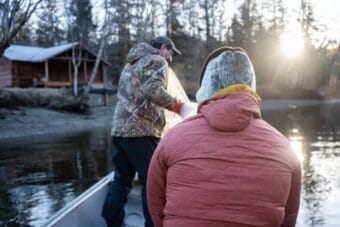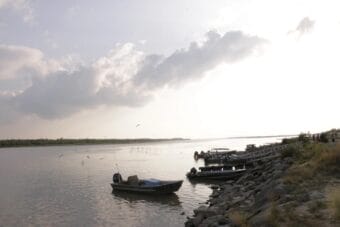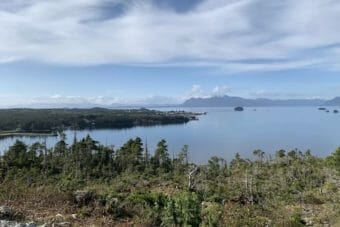
Herring season in Sitka is a study in contrasts. Each spring for the last 45 years, large seiners land tons of herring, whose egg sacs are stripped and sold as a delicacy on the international market, often for millions. But the frenzy and money around the commercial sac roe fishery overshadows a far quieter Indigenous fishing tradition that’s taken place for millennia. KCAW recently accompanied a pair of subsistence harvesters in search of one of Sitka Sound’s most valued food resources – herring eggs on hemlock branches.
It’s a clear Sunday morning in March, and the herring are on the move. Tlk’ Un Yeik Paulette Moreno and Goos’ shu Andrew Roberts are slowly motoring north through Sitka Sound. Their 16-foot yellow boat, nicknamed Tweetybird, is loaded up with five hemlock branches to set today. The traditional Lingít herring egg harvest has begun.
Moreno has been harvesting roe on branches for around 15 years; Roberts has been doing it for most of his life.
“This is usually a pretty good spot, where that boat is, right in that little gut, there,” Roberts points to a rocky area on the western side of Middle Island that has been productive in the past.”
“Traditionally, when they start spawning in here, there’ll be 50 to 100 sets in there,” he adds. “This is real popular place.”
They’re cruising along when an announcement from the Alaska Department of Fish and Game comes over VHF radio. The big story of the morning? The first signs of spawn this spring, around two nautical miles, have been spotted near Shoals Point.
The sun is out, but the water is a bit choppy, so Moreno and Roberts may not make it out to Shoals Point, which is about nine miles of open water away from where we are now, on the southeastern tip of Kruzof Island. But they’re not worried, they’ve already set some trees in that area. Moreno says for the last three years she and the Herring Protectors, a local advocacy group, have been setting “protection trees” to call attention to traditional fishing grounds that should be avoided by commercial seining vessels.
“They’re complete sets, and we put them in strategic locations, and then we call Fish and Game and tell them where they’re at,” Moreno says. “We can set where and when we want, and these protection sets are to remind people who pass that area that there are sets out there. And sometimes those sets do really good, but the idea of a protection tree is to do that, to protect the herring and the area.”
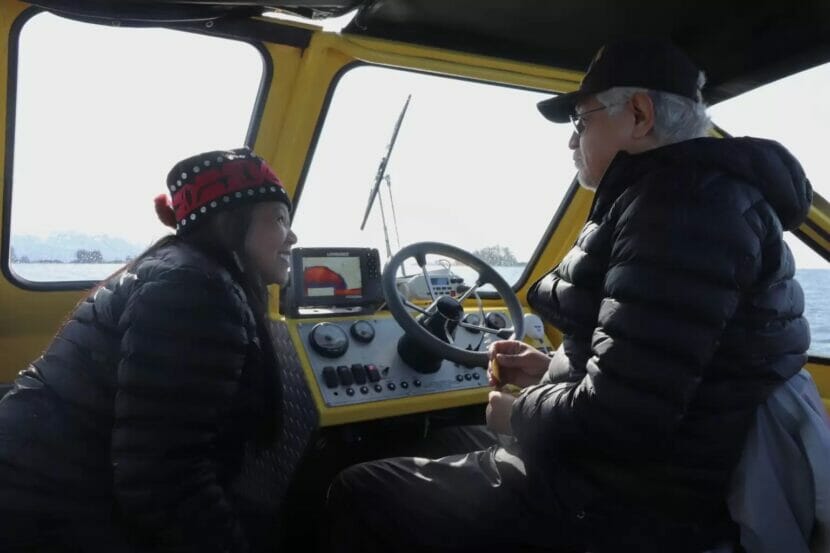
They slow their boat down in the lee of Middle Island to wait for the wind to die down. Roberts breaks out a rod and reel and begins to troll for salmon. It’s a delicate waiting game. The window to set branches at just the right time has shrunk in recent years.
“Instead of seeing the spawn for three or four days, we literally are seeing it pass through in four hours,” Moreno says. Unheard of. Unheard of.”
Roberts, who was born and raised in Sitka, says it didn’t used to be that way.
“I have witnessed when it spawned, it was on both South and North end, there was just nothing but solid herring, it was so thick,” Roberts says.
“I’ve seen, as a toddler, when the tide went out, herring would be stuck in the tide pools, because…the sound was so full, there was no place to fish to go,” he continues. “I’ve seen, just in my generation, how plentiful the herring were, and it’s not that way anymore.”
He believes that’s due to years of mismanagement of the commercial fishery. 2022 saw the biggest commercial harvest in Sitka’s history– 25,000 tons, which was just over half of the 45,000 tons the Department of Fish & Game allowed that year. In 2019 and 2020 the market crashed, and there was no commercial fishing at all. Moreno remembers how good those years off were for traditional harvesters.
“It was a year that COVID had just started, and we came through Middle Island. And it was a very calm, beautiful day. It was Native heaven again,” Moreno says. “There were boats and skiffs, and it was calm, it was peaceful. There was spawn everywhere. There was no competition with the commercial fleet, whatsoever. Everybody’s waving and smiling, we’re all putting down our branches.”
Moreno yearns for that undisturbed time on the water. While she’s called for all-out moratoriums of the commercial fishery in the past, and would still like to see that, she suggests a year on and a year off could be a place where traditional harvesters and commercial fishermen could find compromise.
“It would give us as harvesters, a chance to go out undisturbed and be in that Native heaven, you know, that we experience when there are not obstacles and we are closest to our spirit and our way of life. And then it would give the herring a chance to replenish those different years,” Moreno says.
“So yes, every other year I think would be good,” she adds. “But we need help in pursuing it, because the organizations that we have to go to, to try to just bring these things forward, are not always receptive.”
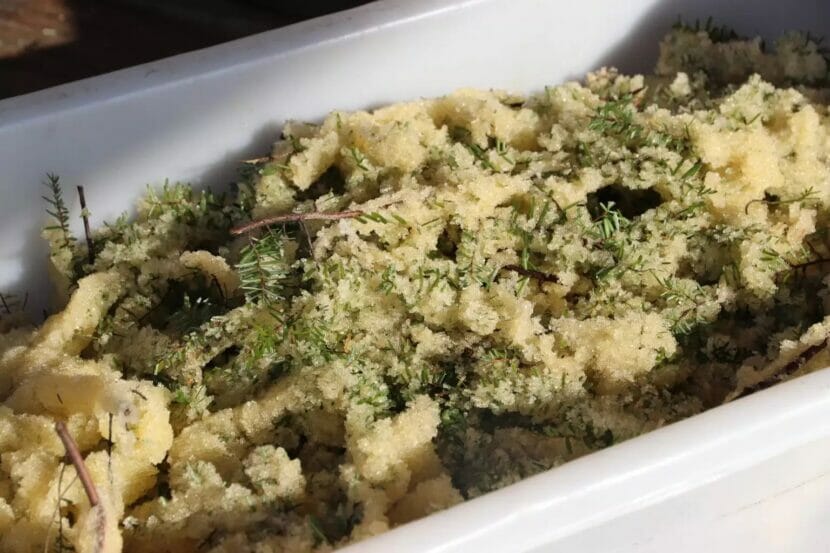
That time out on the water is important to Moreno because traditional harvesting is much more, much deeper than the word “subsistence” suggests.
“And our core is something that we need as a people to survive in the best way possible, because this feeds our spirits. And not only our spirits…there are Alaska Native and Native Alaskans who share this with us, who are hungry for balance in this world, who are hungry for things that matter the most, and this is one of them,” Moreno says. “We need that to be uninhibited. The closer that we are to less barriers and challenges and obstacles just to get the food that we have always eaten…the closer we are to our core.”
“Every barrier that’s put up, that we need to deal with, brings us further from our very soul and our very way of life. And it’s a sacred, beautiful way of life,” she says. “And that’s all we’re asking is to be able to practice that.”
As Roberts and Moreno troll back towards town, over the VHF radio, commercial fishermen let each other know where they’re going next to look for schools of herring. Roberts and Moreno laugh. They can see a big school of herring on their depth sounder just below the boat. But they’ll keep it to themselves today.
“The herring were right there with us,” Moreno said later, as we got off the boat in Sealing Cove. “That’s communication.”
